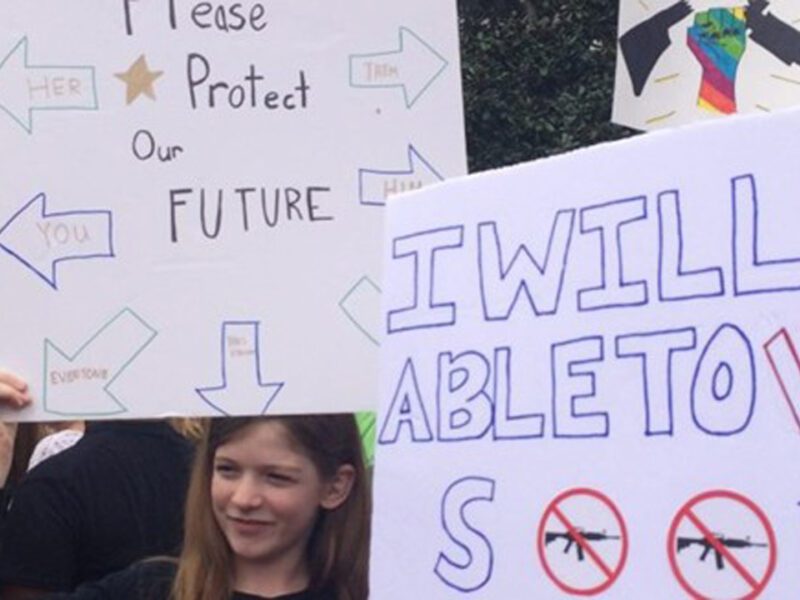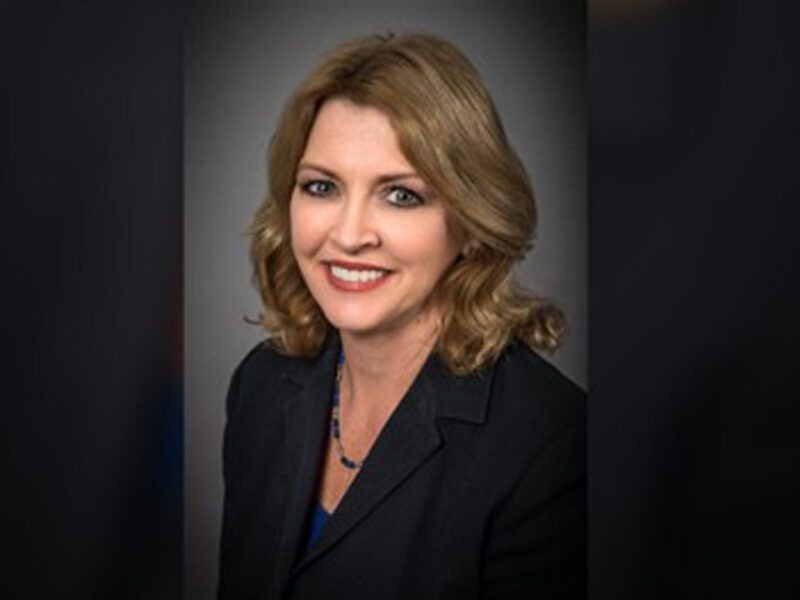Here’s what to expect when school buildings reopen: split classrooms, fewer textbooks, new teachers, empty cafeterias and more
South Florida Sun Sentinel | by Scott Travis | September 8, 2020
It might be the same building when students finally return to school, but school won’t be at all the same.
Students will find isolation rooms, plastic barriers, hand sanitizing stations, electrostatic sprayers and other tools to try to fight off a possible spread of COVID-19.
The bustling atmosphere will be more controlled, and possibly lonely. Students can expect at least half of their classmates to be at home, learning on their computers.
Students will have to wear masks most of the day and could be forced to switch to online learning if they refuse to comply. They can take their masks off to eat lunch, which will likely be at their desks rather than a lunchroom.
Those are among the provisions school districts in South Florida are putting into place before opening the doors over the next few months.
Among the others:
- Parents and visitors will be allowed in only when pre-approved by the principal. Community groups, in most cases, won’t be allowed to use schools at night or on weekends.
- Teachers will be asked to give assignments that students can do on their laptops in an effort to avoid passing out paper, books and other learning materials that may contain germs.
- Many students will get new teachers. Administrators will have to reconfigure schedules to match remote students with teachers at home due to health concerns.
“It’s definitely going to be different,” said Lisa Maxwell, executive director of the Broward Principals and Assistants Association.
All three districts in South Florida opened the school year with remote classes only.
Palm Beach County is likely to be the first in South Florida to open buildings. Gov. Ron DeSantis approved the school district to open on Sept. 21. District officials are still ironing out issues such as how classes will be taught and which teachers will be allowed to work from home.
“I don’t know that we can get to perfect or even extremely good,” Palm Beach County School Board member Debra Robinson said. “Even if we had three more months, there are just so many variables and moving parts. I am hopeful we will be in a workable place, knowing we will have to tweak.”
Broward County schools probably won’t open before October and may start with a pilot program for special needs students. The School Board is expected to discuss a reopening plan on Sept. 22, and Superintendent Robert Runcie said the district expects to give two weeks’ notice before campuses reopen.
Miami-Dade Schools has set a target reopening date of Oct. 5, which officials say could change depending on conditions.
Many South Florida charter schools have said they plan to open at the same time as district schools, but they aren’t required to, and some plan to welcome students back sooner.
One of the first will be Charter Schools USA, which is opening its nine Palm Beach County locations on Sept. 9. That includes G-Star School of the Arts, in West Palm Beach, Palms West Charter in Loxahatchee and five schools with the name Renaissance. No decisions have been made for Broward or Miami-Dade, spokeswoman Colleen Reynolds said.
“As charter schools, we have the flexibility to be nimble and adapt to provide the best options for students,” Reynolds said. “We hope that we can serve as an example of what to do in this new normal and offer advice to any district schools as they go through these processes.”
Part time or full time
Palm Beach and Miami-Dade students probably will continue the normal six- or seven-hour school day five days a week.
Broward is still considering a hybrid option where half of the students who want to return will attend two or three days a week, while the other half work at home. Then the two groups will trade places for the other two or three days.
However, the district has said it can accommodate all students at a school if those on campus are half or less of a school’s capacity. The School Board expects to discuss this at its Sept. 22 workshop.
Campus enrollment
A lot fewer students will be on school campuses this fall, but it remains to be seen how significant the decline will be.
Statewide, about 60% of students are choosing in-person options, Education Commissioner Richard Corcoran has said. It has varied greatly in the three largest school districts that have already opened. Fifty-four percent of students returned to Hillsborough County schools; about 30% returned to Orange County; and two-thirds returned to Duval, according to news reports.
Miami-Dade asked parents to make selections this summer, which showed about half of students planning to return to campuses. Palm Beach County is conducting an updated parent survey this week and Broward will likely do the same in the coming weeks, officials said. A Broward survey of parents and students from June found a third preferred full-time in-person learning, a third wanted distance learning and a third wanted a hybrid model.
Enough teachers?
As in-person learning returns, many teachers in Palm Beach County have argued it’s not safe to return.
“My kids learn best in a physical classroom. However, it’s not possible to teach them in a physical classroom, not safely,” Clarke Bisby, who teaches students with limited English skills at Lake Worth High, told the School Board on last Wednesday. “I’m not eligible for medical leave, and I can’t afford to quit my job.”
The Palm Beach County School Board plans to meet again Wednesday to discuss options for employees over 65 and those with medical issues that may prevent them from coming to school.
“If it’s just, ’I’m afraid of coronavirus,’ that’s not a reason,” Palm Beach County School Board member Karen Brill said.
If Broward first brings back high-risk students in special needs schools, Runcie has agreed to use only teachers who are willing to return. It’s unclear what will happen when more students return, especially if there are too few teachers willing to work on campus to serve all the students.
Only 30% said in July they were comfortable returning, but Broward Teachers Union President Anna Fusco said more may be willing now that the county’s new cases of coronavirus have declined.
Michael Lichtenstein, a government teacher at Pompano Beach High, has been working out of his classroom and plans to stay there once students return.
“Unfortunately, I don’t have the luxury of getting another job, and at the end of the day I have bills to pay,” he said. “Hopefully, my students and their families will recognize that risk and take the necessary precautions when we return.”
School buildings
Principals and other school officials have spent the past few months reviewing the layouts of schools to see how many desks they can fit into a classroom and still maintain social distance.
With the need to spread out, schools will be using libraries, auditoriums and gymnasiums as classrooms. Some students may be on laptops in one room watching their teacher in another room in an effort to maintain social distancing, Palm Beach County school officials said.
“Not all classrooms are created equally, so I think what you’re going to see is going to vary by school and by classroom,” Maxwell said.
Front offices have installed plastic barriers to help shield employees. Districts are also considering them for some classrooms that are too small to socially distance.
Signs directing traffic flow and listing rules about masks and social distance are being added.
Health checks/quarantines
School officials know there will be students and teachers who get COVID-19, so students can expect quarantines, which have become common in districts that have already opened.
According to news reports, Martin County has quarantined more than 200 students; Pinellas schools closed down eight classrooms; Manatee County sent home more than 100 students; and Orange County has quarantined at least 117 students.
Schools do not plan to take the temperature of every student who enters, but they are asking parents to assess their children’s health every day before sending them to school.
Each school will have an isolation room for any student exhibiting COVID-19 symptoms. The student will stay there until a parent or caregiver arrives.
School district officials say they will work with local health officials to determine who needs to be quarantined.
Guidance sent July 23 to Broward school employees said anyone who was in close contact with a person with COVID-19 should be quarantined for 14 days. Brian Katz, the district’s safety chief, said this includes anyone who was within 6 feet of someone with COVID-19 for 15 minutes, as well as anyone who provided care at home or who shared eating or drinking utensils with someone with COVID-19.
Cleaning and santizing
School districts say cleaning and sanitizing will be a regular part of the school day, both for campuses and school buses.
Broward’s plan calls for students to clean their desks before they leave class. District staff will conduct “enhanced daily after-school cleaning.”
Power cleaning will be completed by an outside cleaning provider two to five times per week using electrostatic misters, the Broward plan says. “Special area cleaning will be completed daily for recently occupied locker rooms, weight rooms, corridor and hallways, auditoriums, playgrounds, athletic equipment” and other high-germ areas.
“In the event an individual who tests positive for COVID-19 visited a [Broward School] District facility, the facility will be thoroughly cleaned, sanitized and disinfected,” Katz wrote.
Photo: Michael Lichtenstein, a U.S. government, politics, and financial literacy professor at Pompano Beach High School, works from his classroom and plans to be there when students return. (Jennifer Lett/Sun Sentinel)






